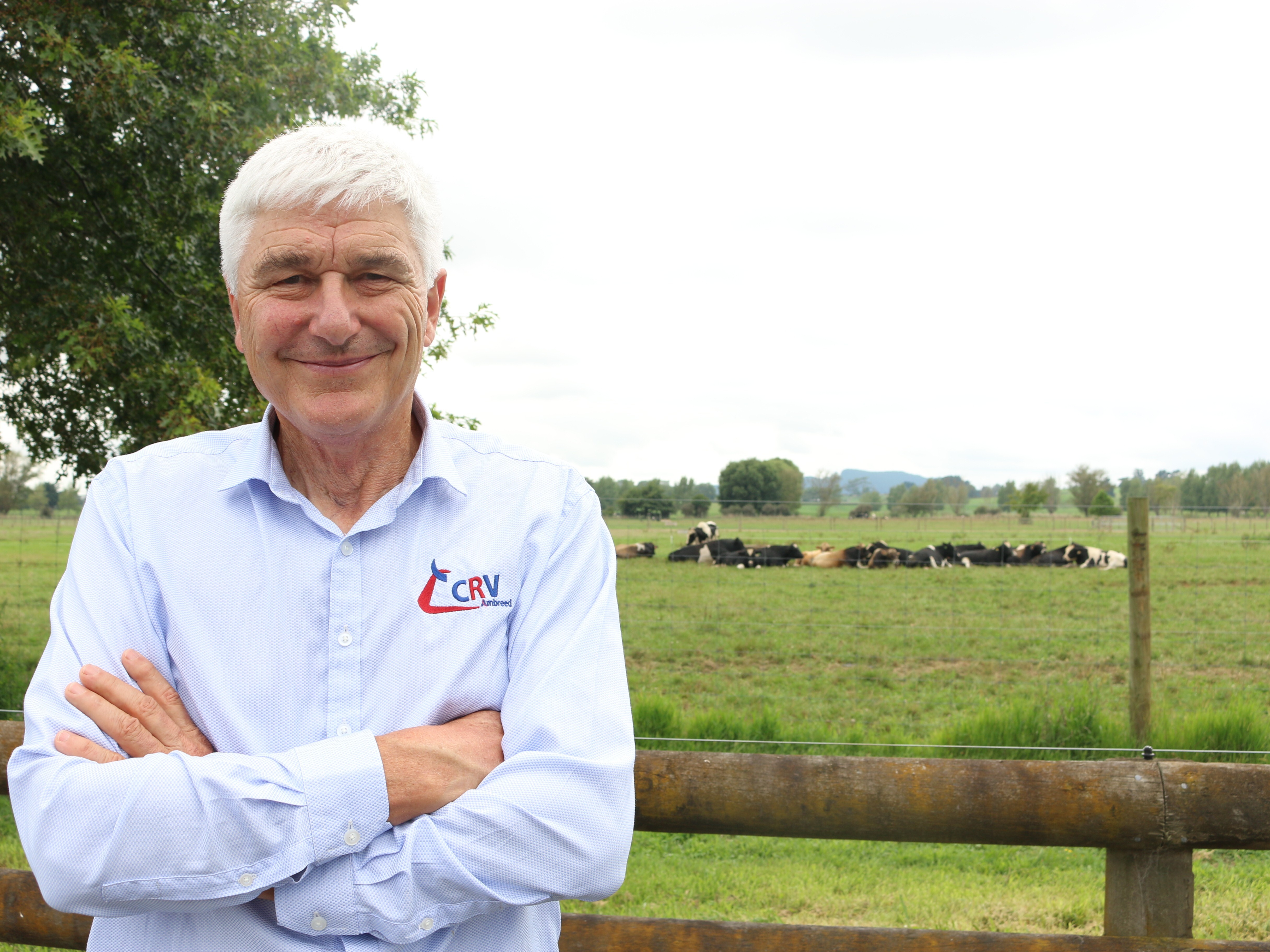Rain and humid conditions in the Waikato and the Manawatu in particular, are causing FE spore counts to rise.
CRV has been selecting bulls for FE tolerance for the past decade. This work is part of the company’s commitment to providing healthy and efficient genetic solutions to the New Zealand dairy industry.
The company’s lead scientist Phil Beatson says dairy farmers should be considering FE tolerant sires as part of their mating programme so their herds are resilient to FE should the use of zinc become disallowed.
“Zinc is only one tool we have for managing facial eczema, a disease that’s likely to become more prevalent as our climate warms up,” Phil says.
“Concerns have grown in Europe about using zinc. It’s only a matter of time before the impact of these concerns are felt here in New Zealand, so it is imperative farmers proactively look for alternatives now.
“It’s not prudent for our dairy industry to rely predominantly on zinc to prevent facial eczema. As an industry we must get on top of it now if we want to protect our competitive advantage on the world stage. One effective way to do that is through breeding animals resistant to the disease,” says Phil.
FE is caused by a fungus on pasture which produces spores during periods of warm temperatures and high humidity. Animals ingest the spores containing a toxin that causes liver damage.
VetEnt Vet Emma Cuttance says the clinical signs of FE are seen in peeling skin and red teats but more often, animals suffer liver damage without any visible signs of the disease.
“Facial eczema can severely impact milk production for successive seasons as animals struggle to recover. It also presents a real animal welfare issue for the industry.
“I always say the first thing that farmers need to do to manage FE is start breeding for tolerance because that is a long-term game that needs to be started many years in advance. Then they can work on the other management strategies in the interim.”
FE is generally under diagnosed in New Zealand herds. A research project carried out in 2013 by Emma and funded by DairyNZ, across 105 North Island farms, found that one third of farms had animals that had suffered significant liver damage without displaying any clinical signs of FE.
“There is still too much guess work happening in diagnosing herds and we really need to be doing more,” says Emma. “Zinc is good at managing facial eczema if it’s given in the right dose, but the vast majority of farmers aren’t able to give the dose needed because of the way it is provided.”
Emma says around 60 percent of farmers give zinc to their herds through water. However, she believes it is near impossible to get cows to drink enough water to get an adequate does of zinc to protect them against FE.
“With zinc already being phased out in Europe, we need to be prepared for that eventuality in New Zealand by working on strategies than may require no or less zinc in the future. Breeding for facial eczema tolerance is a longer-term measure that needs to be adopted moving forward,” says Emma.
Working under strict animal ethics protocols, the CRV team has been challenging bulls with the toxin that causes FE to see which ones are the most resistant to the challenge. CRV measures the level of the enzyme GGT, which is released by the animal's liver after being exposed to spores.
“At weeks 2 and 3 after the challenge, we take blood samples and monitor the GGT level of those bulls. The data is added to the AgResearch FE database and breeding values for GGT are calculated. Subsequently, those bulls with the lowest GGT breeding values are marketed as FE tolerant sires,” says Phil.
A decade into the programme, Phil says there is anecdotal evidence that farmers using the FE tolerant bulls have lower incidence of FE in their herds, indicating that the selection programme is working.
“Farmers need to start breeding for facial eczema tolerance now. FE tolerant sires need to be used year on year in order to achieve incremental genetic gains over generations. It’s not a one off,” says Phil.
“Dairy farmers are facing a lot of challenges right now. If we can breed animals that aren’t as likely to get facial eczema, that is one less challenge they have to tackle.”
Listen to Phil and Emma on CRV’s latest Better Herd Podcast to find out more.

